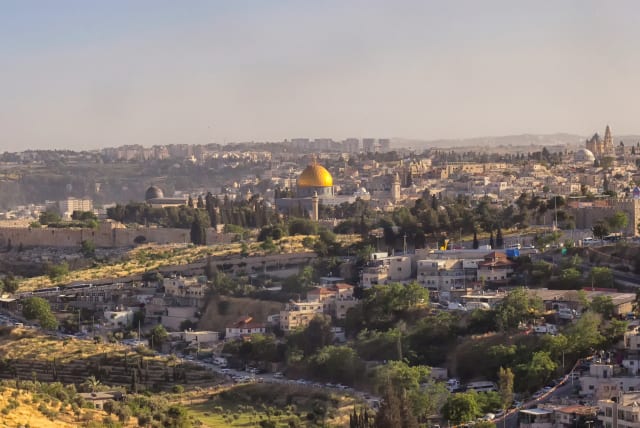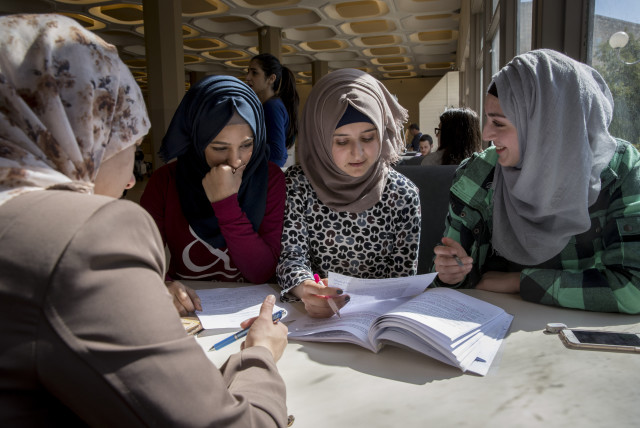Between heaven and earth, challenge and opportunity in Jerusalem - opinion

Jerusalem’s main challenge remains its high poverty rate, particularly among the haredi and Arab populations.
Jerusalem is a city of convergence. For 3000 years it has been the meeting point of East and West, past present and future, and heaven and earth. On the occasion of Jerusalem Day this year, which marks the 56th anniversary of the city’s reunification, we have an opportunity to reexamine the most beautifully complex city in the world; its main challenges and opportunities, and why it is significant to the country as a whole.
After three challenging years of COVID-19, which devastated international tourism in the city, it is heartening to see Jerusalem gradually returning to the levels of tourism we had before the outbreak of the pandemic. The city is showing a 10-fold increase on 2021, reaching 673,600 tourists in 2022 – and interestingly, overnight stays at 2.39 are the highest in Israel.
Jerusalem is also the preferred destination for new immigrants, and can now boast being the largest absorber of immigrants in the country at 3,700 olim a year. When walking around the city, you can hear multiple languages being spoken, making it the most multicultural city in the country.
In addition, Jerusalem’s metropolis has grown in size. In 2021, its total population, including that of the City of Jerusalem, totaled 1,403,700 residents across 80 localities (437,500 residents in localities outside the metropolitan core). Notably, a significant majority (69%) of Jerusalem residents live in the city. This proportion is higher than in the metropolitan areas of Israel’s other major cities: Tel Aviv (11%), Haifa (29%), and Beersheba (51%).
The largest localities in metropolitan Jerusalem are Beit Shemesh, Betar Illit, Ma’aleh Adumim, Mevaseret Zion, and Givat Ze’ev. With most of these residents making Jerusalem the center of their lives for employment, education, leisure, and recreation, this is good news for the city!
In east Jerusalem, an increasing number of Arab residents are moving toward integration with now higher rates of Arab students than ever graduating the Israeli matriculation (bagrut) as opposed to the tawjihi, the Palestinian matriculation exams.
WORKFORCE PARTICIPATION rates have also seen a marked increase among Arab men, reaching 81% in 2022. In addition, Arab women from east Jerusalem, whose workforce participation rate was ranked among the lowest in the Middle East, has doubled in under a decade from 14% in 2014 to 27% today. These are very encouraging social mobility trends for a community whose identity is still conflicted and who have radical elements in their midst. They prove that they too simply want to have a better life.
Poverty remains Jerusalem's main challenge
Even with these very encouraging numbers, Jerusalem’s main challenge remains its high poverty rate, particularly among the haredi and Arab populations. Among Jerusalem’s haredi population, 43% are living below the poverty line – a slightly higher figure than the poverty rate among Israel’s haredi population, at 40%. Among Jerusalem’s Arab population, 60% are living below the poverty line, compared with 39% among the Arab population in Israel as a whole.
On Israel’s 75th anniversary, Jerusalem, a 3,000-year-old city, is the youngest city in the country; a staggering one-third of its population are children. It is also the most populous city in Israel, totaling 966,200 residents, double that of Tel Aviv (467,900) and three times that of Haifa (282,800).
Essentially one in every 10 Israelis is a Jerusalemite and part of a diverse community of different identities, tastes and origins. This mosaic makes for an energetic city where we can find inspiration in every corner.
Understanding the challenges facing Jerusalem, through in-depth research alongside long-term policy, will ensure the continued prosperity of the city and the well-being of all its residents. Jerusalem’s demography today reflects the general trends in the country as a whole and therefore, our models for economic development and the advancement of a shared society will eventually serve the entire country in the future.
Happy Jerusalem Day!
Fleur Hassan-Nahoum is the deputy mayor of Jerusalem for foreign relations, economic development and tourism. Dr David Koren is the CEO of the Jerusalem Institute for Policy Research.
Jerusalem Post Store
`; document.getElementById("linkPremium").innerHTML = cont; var divWithLink = document.getElementById("premium-link"); if (divWithLink !== null && divWithLink !== 'undefined') { divWithLink.style.border = "solid 1px #cb0f3e"; divWithLink.style.textAlign = "center"; divWithLink.style.marginBottom = "15px"; divWithLink.style.marginTop = "15px"; divWithLink.style.width = "100%"; divWithLink.style.backgroundColor = "#122952"; divWithLink.style.color = "#ffffff"; divWithLink.style.lineHeight = "1.5"; } } (function (v, i) { });

